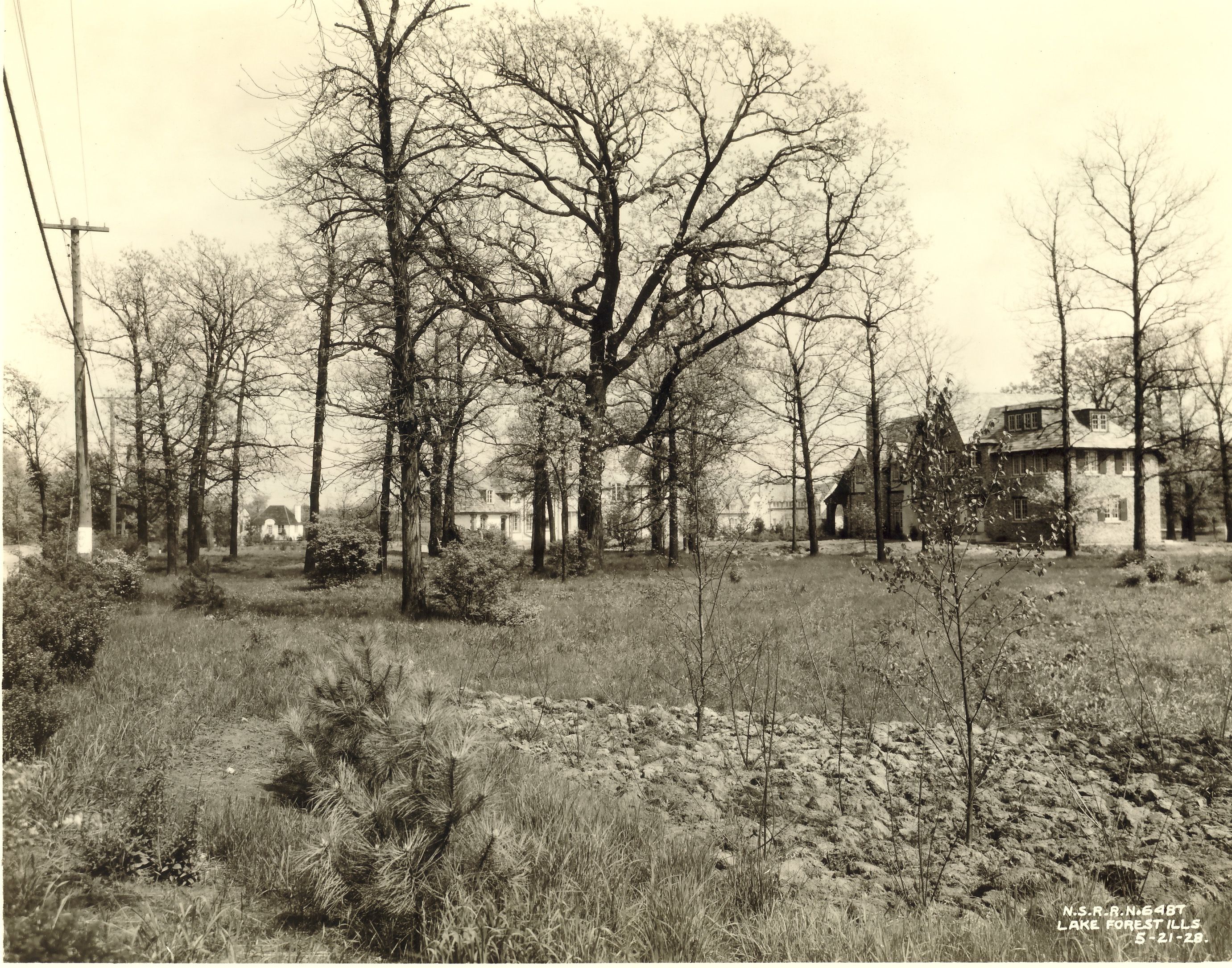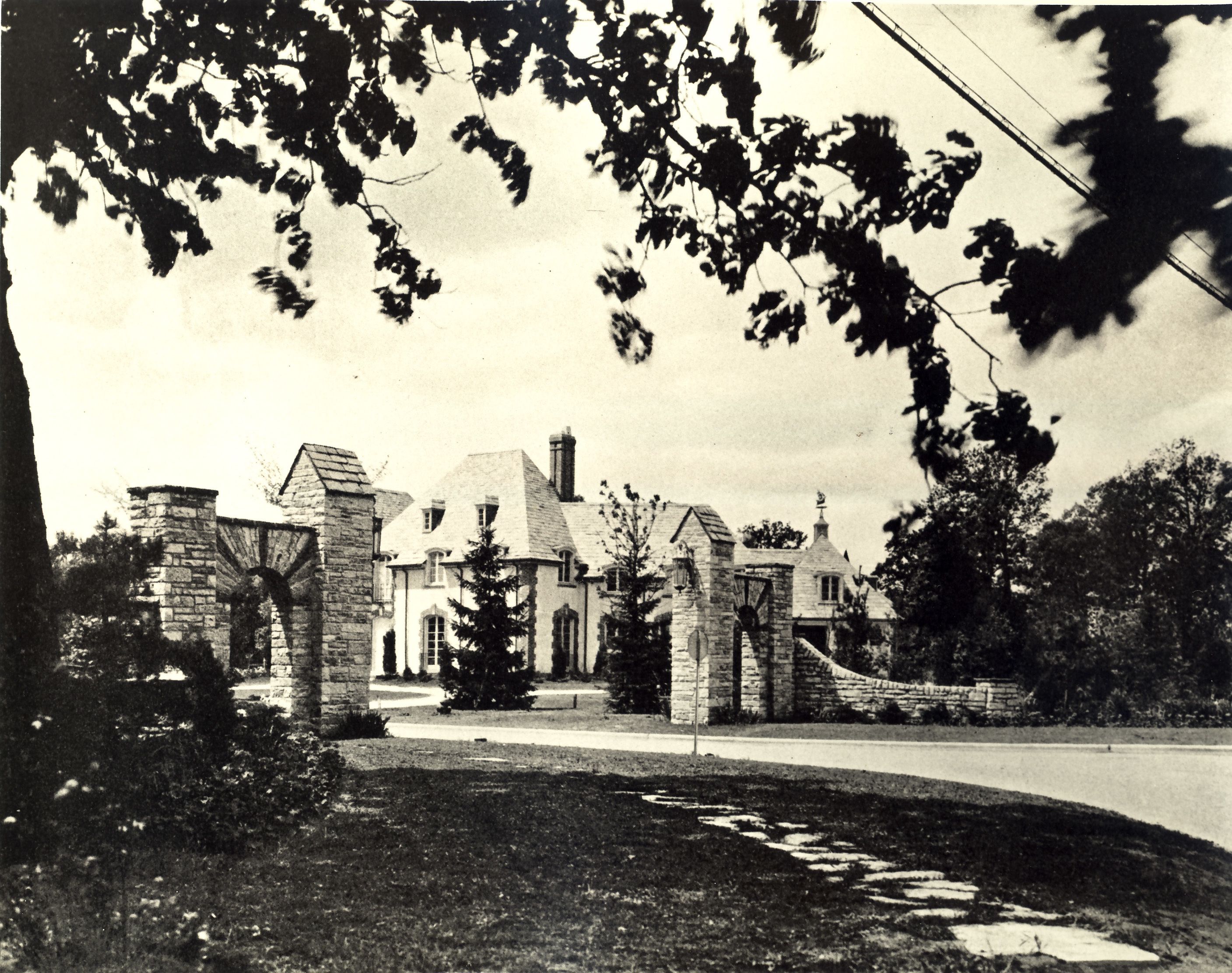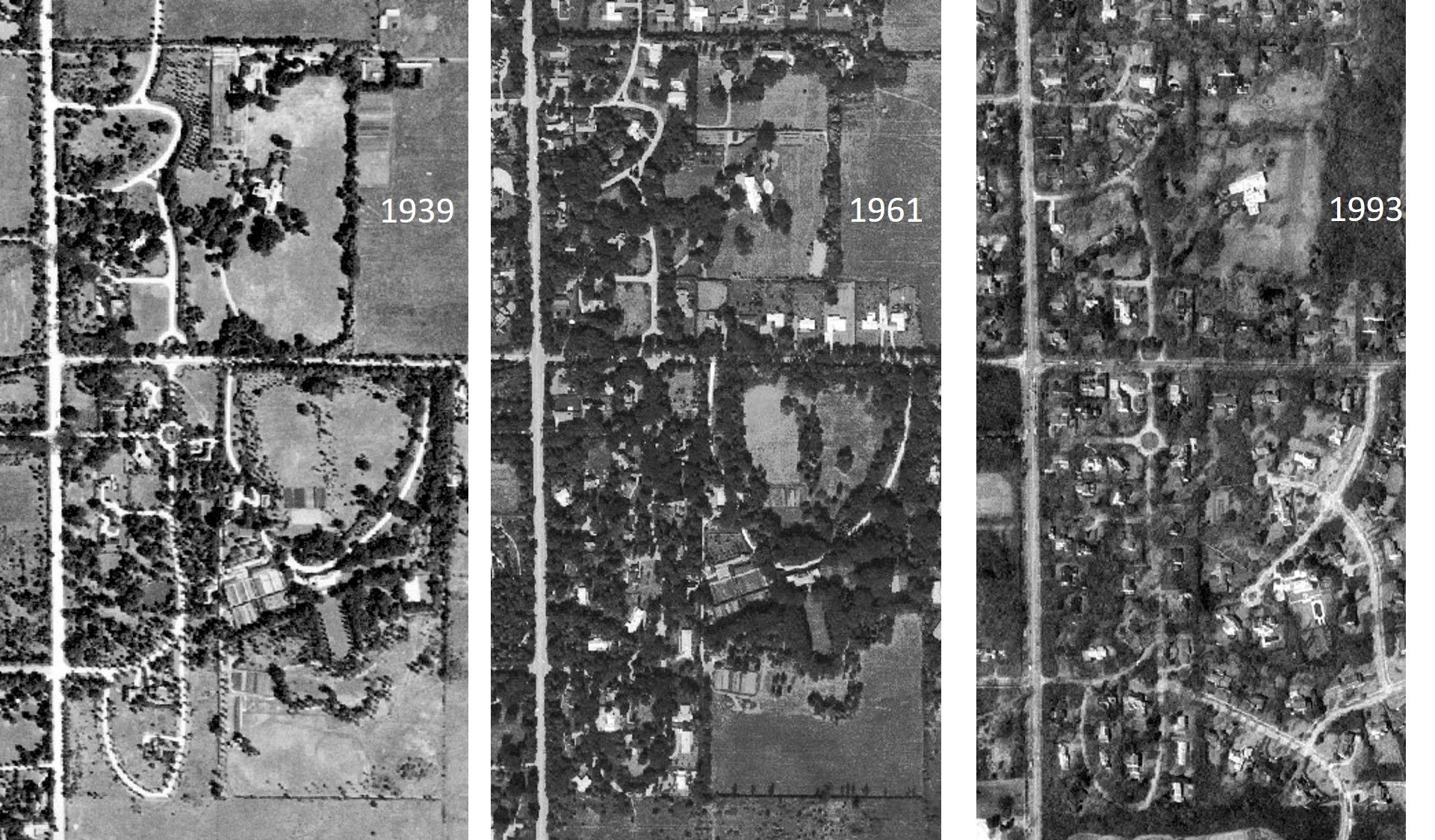
Homes of Deerpath Hill Estates during the neighborhood’s early stages of development. Southeast corner of Deerpath and Waukegan, looking east, 1928.

Entrance gateway to King Muir Road from Deerpath, 1930. The entrance gates to the new neighborhood mimicked what Lake Foresters were accustomed to seeing in front of single-family estates.

Homes of Deerpath Hill Estates during the neighborhood’s early stages of development. Southeast corner of Deerpath and Waukegan, looking east, 1928.

In the 1920s, developer Henry K. Turnbull began to buy properties along Deerpath, just east of Waukegan Road. Among the sellers were the Farrells, original pioneers to the area, and country estate owners Leroy Burton, George McKinlock, and Joseph Cudahy. Unlike earlier purchasers of land west of Lake Forest, he did not establish a gentleman farm – he built a neighborhood.
Turnbull and his principal architect, Stanley Anderson, sought to create a garden-like subdivision on large lots with stately homes, cul-de-sacs, and entrance gates. Though the Great Depression interrupted their efforts, post-WWII builders largely followed the original 1920s plan, resulting in an eclectic mix of homes inspired by the City Beautiful movement.
You can see from these aerial photos that Deerpath Hill Estates still had undeveloped land in 1939, later filled in by 1961 and more so by 1993. For reference, Waukegan Road cuts vertically through the left of the images, and Deerpath bisects them horizontally.